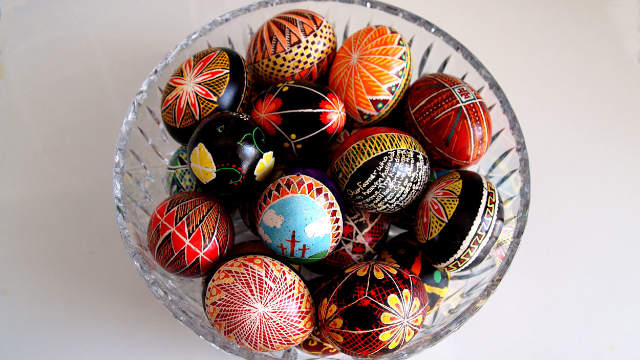The custom of giving eggs at Easter celebrates new life. Christians remember that Jesus, after dying on the cross, rose from the dead. This miracle showed that life could win over death.
For Christians the egg is a symbol of Jesus’ resurrection, as when they are cracked open they stand for the empty tomb. No one actually knows when eggs were first used as symbols at festival times but it was long before Jesus’ time. Eggs were always thought to be special because although they do not seem alive, they have life within them especially at springtime when chicks hatch out.
Long ago people gave gifts of eggs carved from wood or precious stones. The first sweet eggs that were eaten were made in the last 100 years from sugar or marzipan. Since then chocolate eggs have become popular and these are given on Easter Sunday.
Cultures each have their own traditions when it comes to decorating the eggs. In Canada, we dye hard boiled eggs that are often hidden for an Easter Egg Hunt. In Austria the eggs are hollowed and then pieces are punched out to make patterns – check out the purple egg from this gallery. The Hungarians paint hollowed out eggs and string them up on branches to make an Easter Egg Tree. The Danish paint on wooden eggs and display them in their flower pots. Perhaps the best known Easter eggs are the Psanky the Ukranians make using hollowed out eggs with natural dyes and wax.
Do you know of other Easter Egg traditions?
Tell us about them through CONTACT US found on the top of each web page.
Thanks for sharing.


